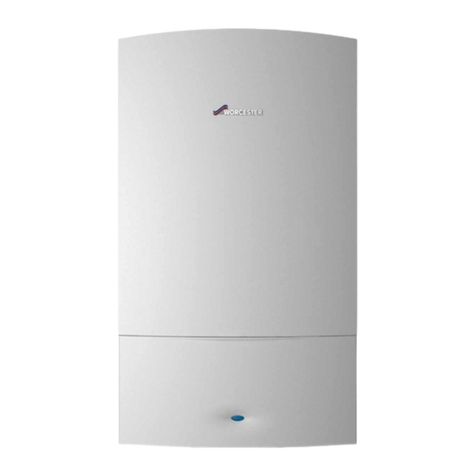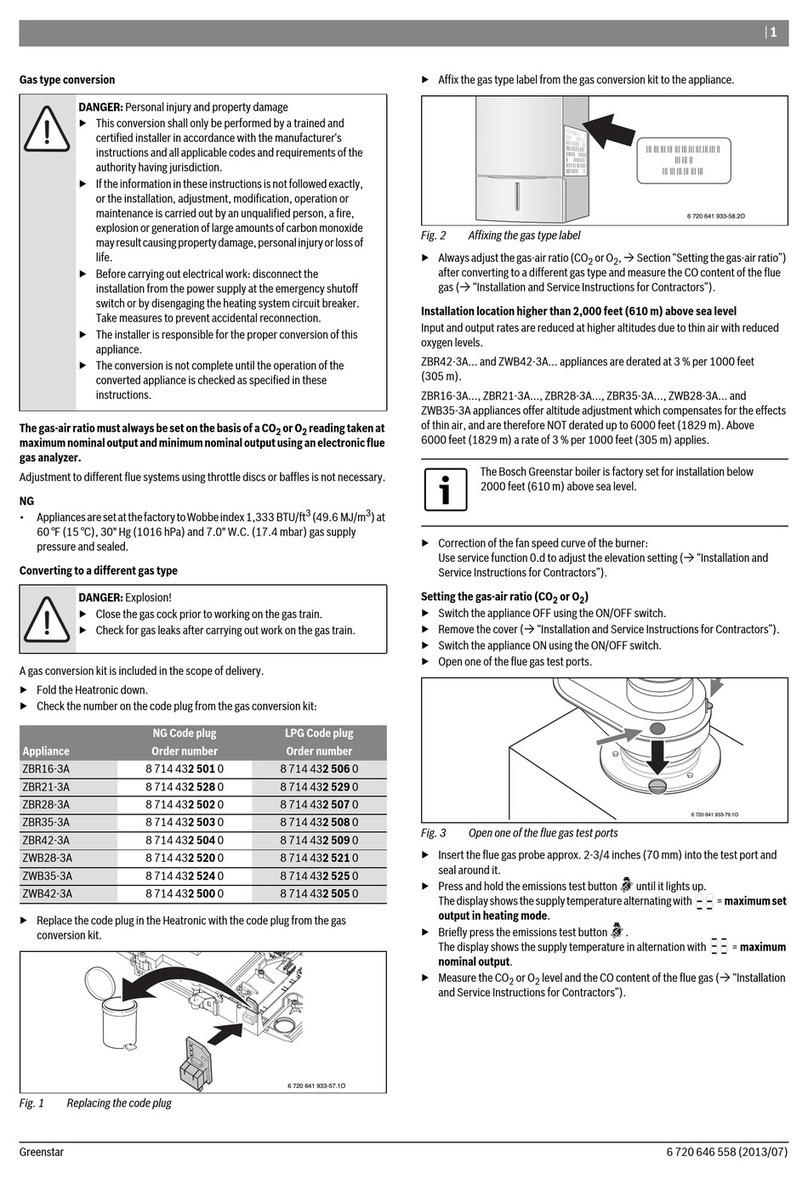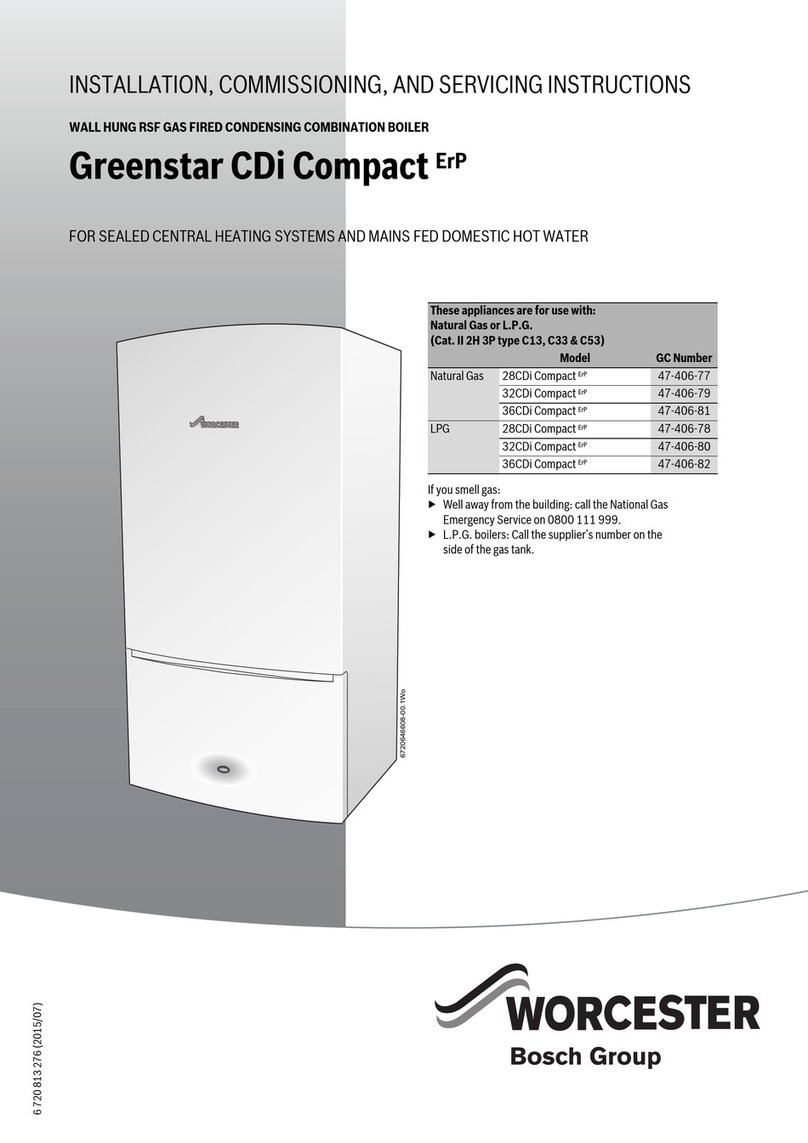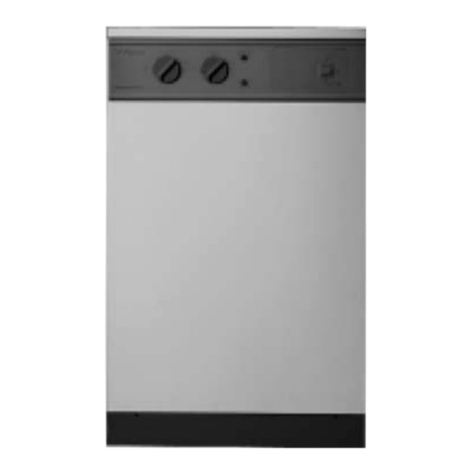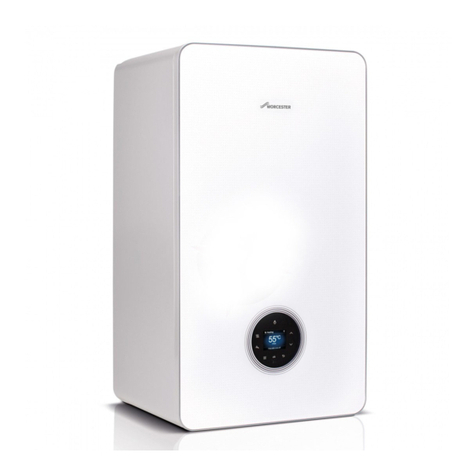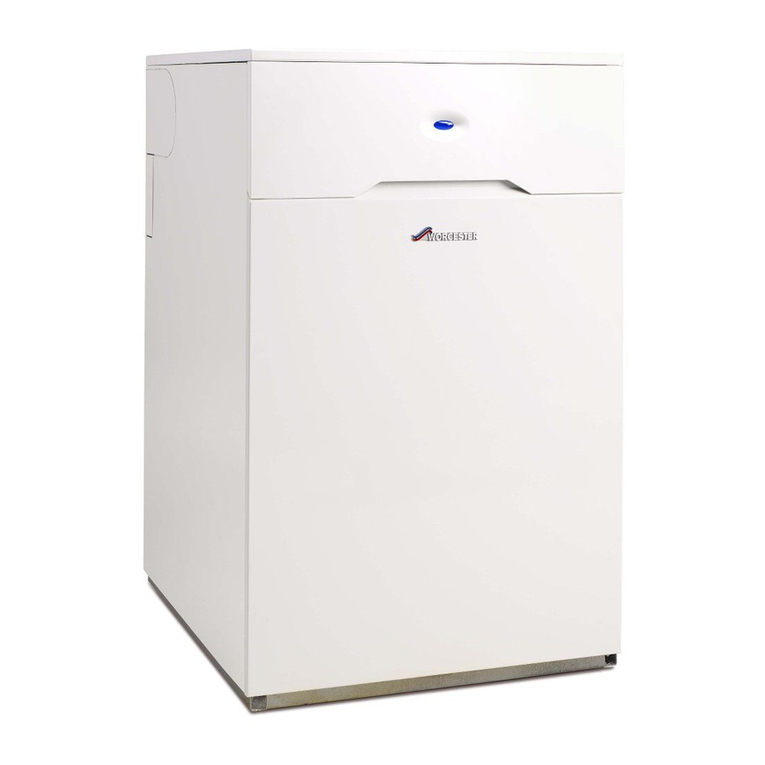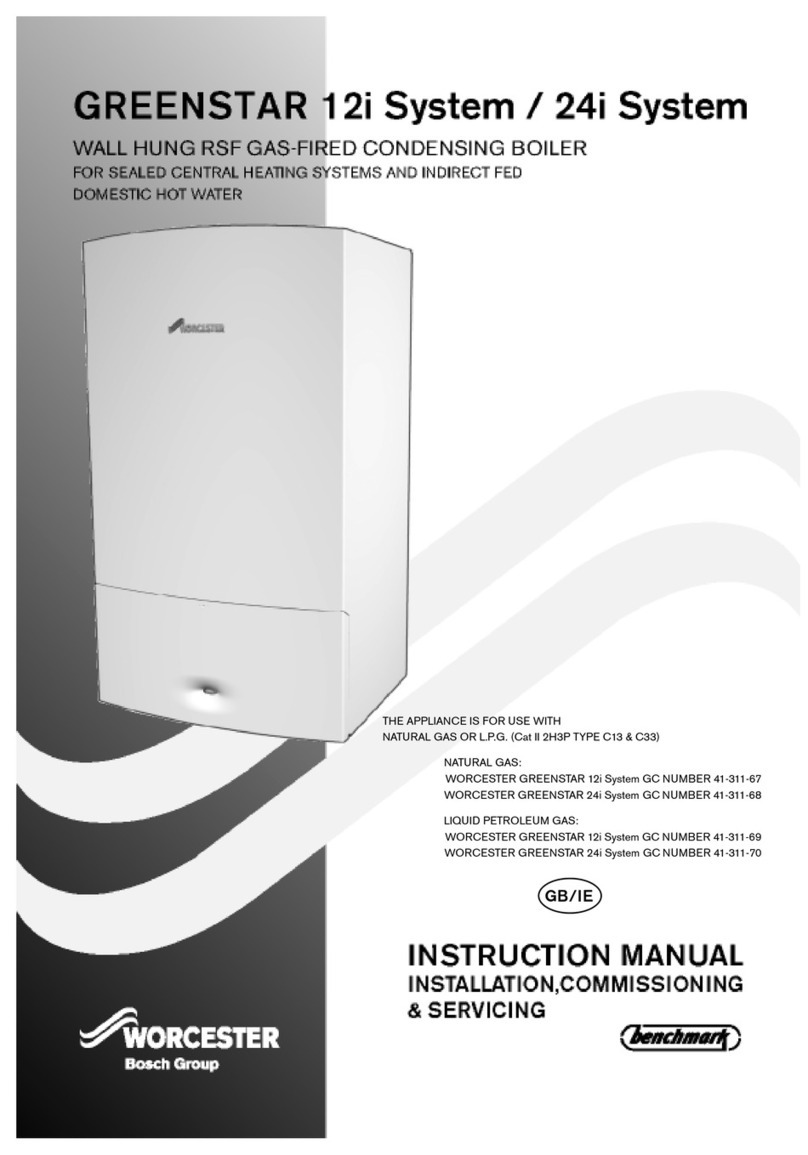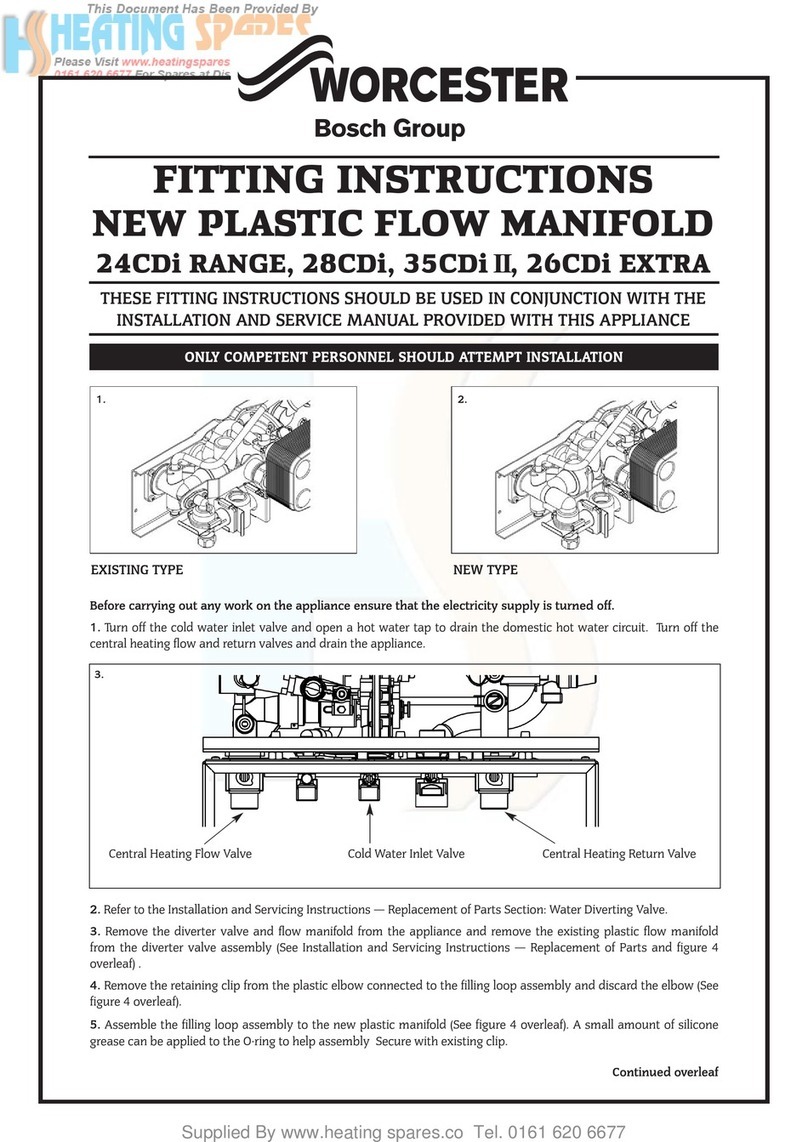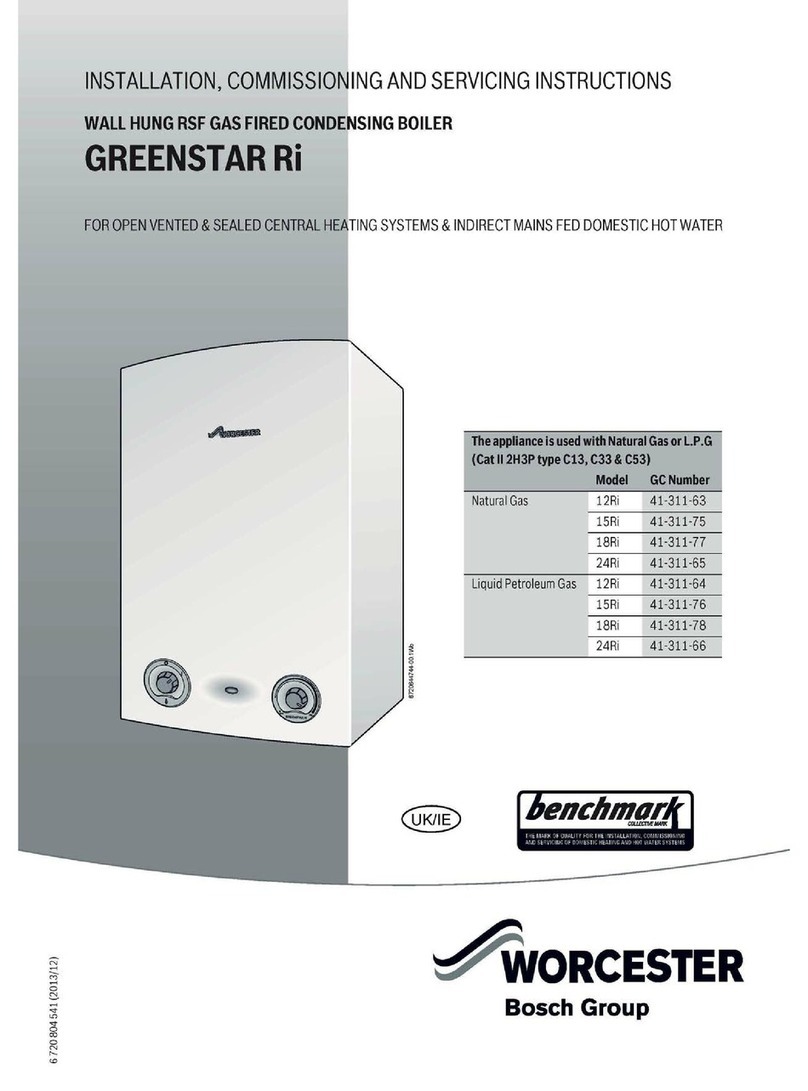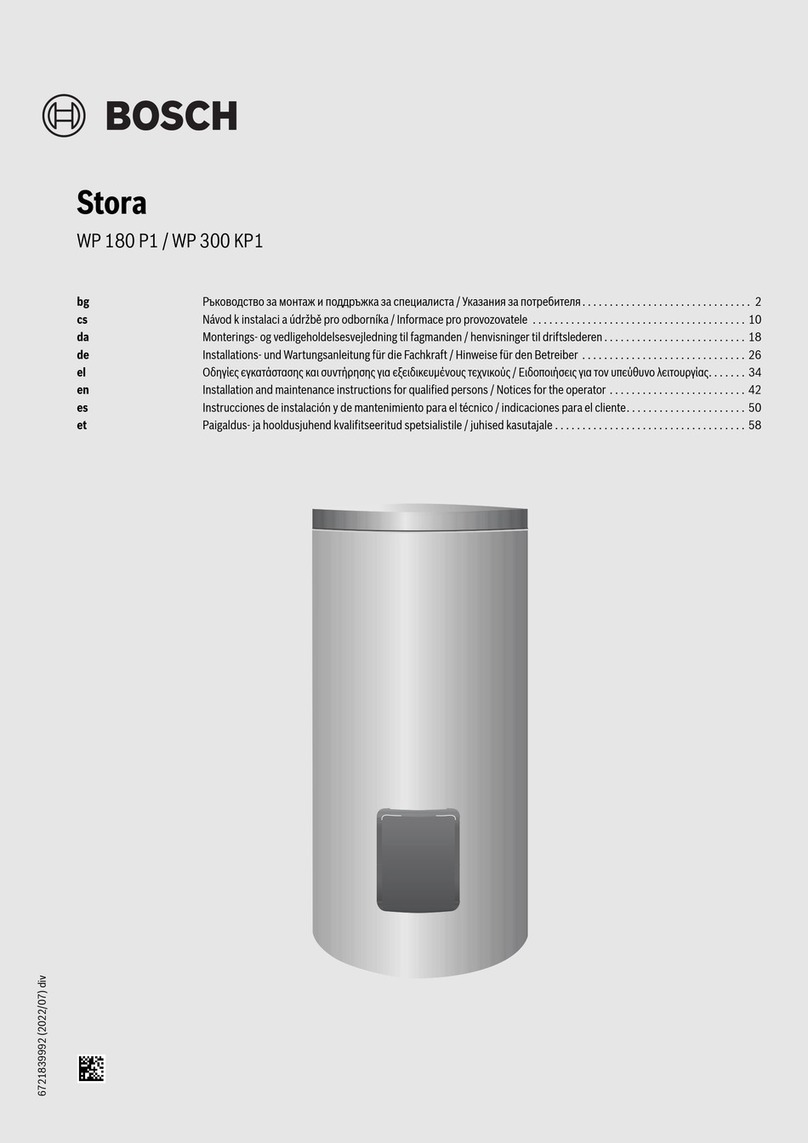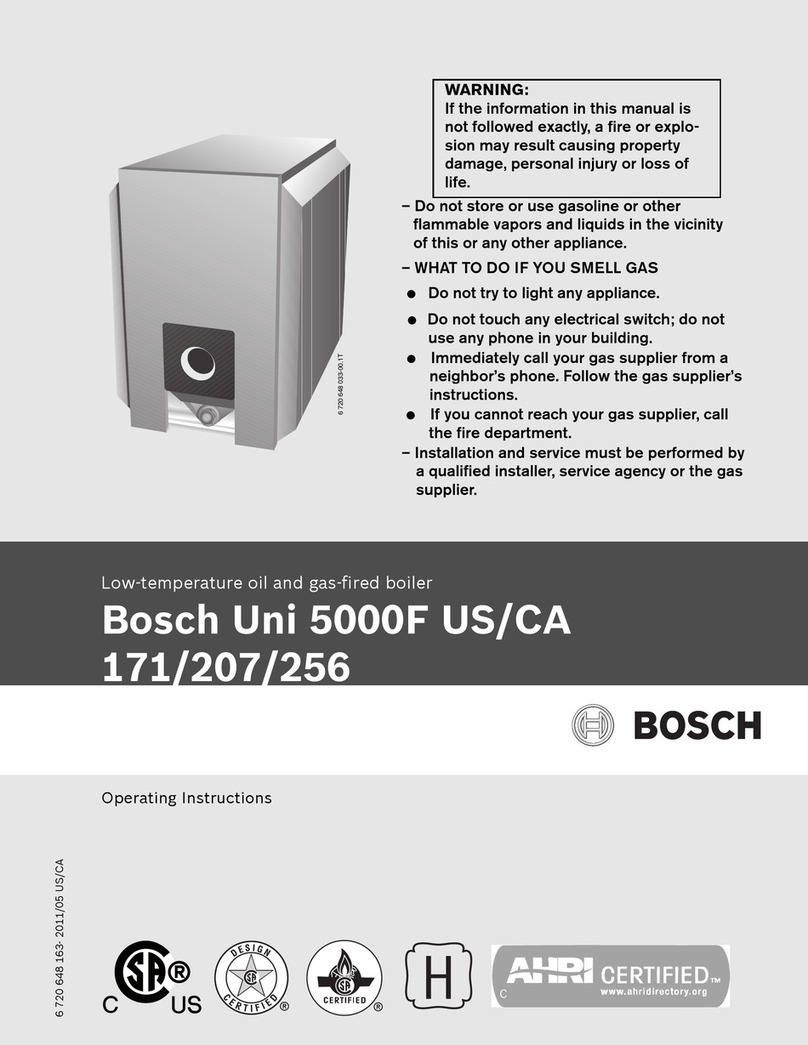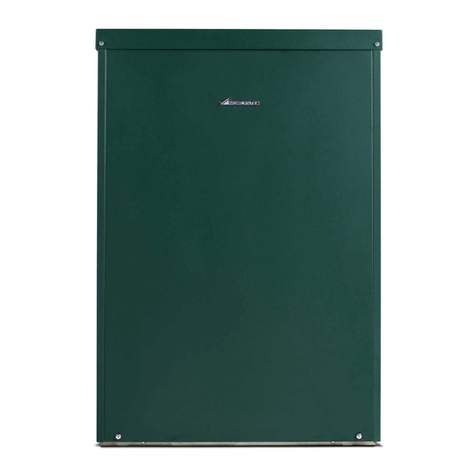
Contents
Greenstar Heatslave II External 2022+ 6 721 843 980 (2022/01)2
Contents
1 Key to symbols and safety instructions . . . . . . . . . . . . . . . . . . . 3
1.1 Key to symbols . . . . . . . . . . . . . . . . . . . . . . . . . . . . . . . . . 3
1.2 General safety instructions . . . . . . . . . . . . . . . . . . . . . . . . 3
2 Installation regulations . . . . . . . . . . . . . . . . . . . . . . . . . . . . . . . . 4
2.1 Complying with the building regulations . . . . . . . . . . . . . 4
3 Appliance information . . . . . . . . . . . . . . . . . . . . . . . . . . . . . . . . . 5
3.1 General information . . . . . . . . . . . . . . . . . . . . . . . . . . . . . 5
3.2 Technical data . . . . . . . . . . . . . . . . . . . . . . . . . . . . . . . . . . 5
3.3 Energy efficiency . . . . . . . . . . . . . . . . . . . . . . . . . . . . . . . . 6
3.4 Layout & components . . . . . . . . . . . . . . . . . . . . . . . . . . . . 7
4 Pre-Installation . . . . . . . . . . . . . . . . . . . . . . . . . . . . . . . . . . . . . . . 8
4.1 Cleaning primary systems . . . . . . . . . . . . . . . . . . . . . . . . . 8
4.2 Mains supply . . . . . . . . . . . . . . . . . . . . . . . . . . . . . . . . . . . 9
4.2.1 Electrical supply . . . . . . . . . . . . . . . . . . . . . . . . . . . . . . . . 9
4.2.2 Water supply . . . . . . . . . . . . . . . . . . . . . . . . . . . . . . . . . . . 9
4.2.3 Oil supply . . . . . . . . . . . . . . . . . . . . . . . . . . . . . . . . . . . . . . 9
4.2.4 Pipework . . . . . . . . . . . . . . . . . . . . . . . . . . . . . . . . . . . . 10
4.2.5 Boiler isolation valve . . . . . . . . . . . . . . . . . . . . . . . . . . . 11
4.3 Water systems and pipework . . . . . . . . . . . . . . . . . . . . 11
4.4 Condensate pipework . . . . . . . . . . . . . . . . . . . . . . . . . . 12
4.4.1 Condensate disposal connections . . . . . . . . . . . . . . . . 12
4.4.2 Soak away . . . . . . . . . . . . . . . . . . . . . . . . . . . . . . . . . . . 13
4.5 Pressure relief pipework . . . . . . . . . . . . . . . . . . . . . . . . 14
4.6 Boiler locations and clearances . . . . . . . . . . . . . . . . . . 14
4.7 Flue gas system considerations . . . . . . . . . . . . . . . . . . 15
4.7.1 Combustion air quality . . . . . . . . . . . . . . . . . . . . . . . . . 15
4.7.2 Flue terminal positions . . . . . . . . . . . . . . . . . . . . . . . . . 15
4.8 Flue options . . . . . . . . . . . . . . . . . . . . . . . . . . . . . . . . . . 18
4.8.1 Cabinet mounted balanced horizontal flue options . . 18
4.8.2 Plume management . . . . . . . . . . . . . . . . . . . . . . . . . . . 18
4.8.3 Plume management considerations . . . . . . . . . . . . . . . 19
5 Installation . . . . . . . . . . . . . . . . . . . . . . . . . . . . . . . . . . . . . . . . . 21
5.1 Unpacking the boiler . . . . . . . . . . . . . . . . . . . . . . . . . . . 21
5.2 Pipework and flue positions . . . . . . . . . . . . . . . . . . . . . 21
5.3 Boiler installation . . . . . . . . . . . . . . . . . . . . . . . . . . . . . 22
5.4 Flue installation . . . . . . . . . . . . . . . . . . . . . . . . . . . . . . . 22
5.4.1 Flue Components . . . . . . . . . . . . . . . . . . . . . . . . . . . . . 22
5.4.2 Rear Flue options _ Greenstar - all models . . . . . . . . . . 22
5.4.3 Side Flue options - Heatslave II . . . . . . . . . . . . . . . . . . . 23
5.4.4 All flue options, final assembly . . . . . . . . . . . . . . . . . . . 24
5.4.5 Terminal guard . . . . . . . . . . . . . . . . . . . . . . . . . . . . . . . . 25
5.4.6 Flue damper installation . . . . . . . . . . . . . . . . . . . . . . . . 25
5.4.7 Installation notes . . . . . . . . . . . . . . . . . . . . . . . . . . . . . . 25
5.4.8 All flue options . . . . . . . . . . . . . . . . . . . . . . . . . . . . . . . . 25
5.5 Combustion chamber . . . . . . . . . . . . . . . . . . . . . . . . . . 25
5.6 Pipework connections . . . . . . . . . . . . . . . . . . . . . . . . . 26
5.7 Oil burner and pump . . . . . . . . . . . . . . . . . . . . . . . . . . . 27
5.8 Refitting components . . . . . . . . . . . . . . . . . . . . . . . . . . 28
5.9 Electrical . . . . . . . . . . . . . . . . . . . . . . . . . . . . . . . . . . . . 29
5.10 Electrical schematic . . . . . . . . . . . . . . . . . . . . . . . . . . . 31
5.11 Weather compensation . . . . . . . . . . . . . . . . . . . . . . . . . 32
6 Commissioning . . . . . . . . . . . . . . . . . . . . . . . . . . . . . . . . . . . . . . 33
6.1 Pre-commissioning checks-appliance . . . . . . . . . . . . . . 33
6.2 Filling the system . . . . . . . . . . . . . . . . . . . . . . . . . . . . . . 33
6.3 Starting the appliance . . . . . . . . . . . . . . . . . . . . . . . . . . 34
6.3.1 Single pipe gravity feed systems: . . . . . . . . . . . . . . . . . 34
6.3.2 Double pipe sub-gravity feed systems and single pipe
suction lift with de-aerator: . . . . . . . . . . . . . . . . . . . . . . 34
6.3.3 Burner head setting . . . . . . . . . . . . . . . . . . . . . . . . . . . . 35
6.3.4 Boiler lockout . . . . . . . . . . . . . . . . . . . . . . . . . . . . . . . . . 35
6.3.5 Switching the appliance on/off . . . . . . . . . . . . . . . . . . . 36
6.3.6 Selecting Service Menus . . . . . . . . . . . . . . . . . . . . . . . . 37
6.3.7 Finish commissioning boiler checks . . . . . . . . . . . . . . . 39
6.4 Water treatment . . . . . . . . . . . . . . . . . . . . . . . . . . . . . . . 40
6.5 Finishing commissioning - Appliance . . . . . . . . . . . . . . 41
6.5.1 Appliance guarantee . . . . . . . . . . . . . . . . . . . . . . . . . . . . 41
7 Service and spares . . . . . . . . . . . . . . . . . . . . . . . . . . . . . . . . . . . 42
7.1 Inspection and service . . . . . . . . . . . . . . . . . . . . . . . . . . 42
8 Fault finding and diagnosis . . . . . . . . . . . . . . . . . . . . . . . . . . . . 47
8.1 Status cause codes . . . . . . . . . . . . . . . . . . . . . . . . . . . . . 47
8.2 Information menu . . . . . . . . . . . . . . . . . . . . . . . . . . . . . . 47
8.3 Service menus . . . . . . . . . . . . . . . . . . . . . . . . . . . . . . . . . 48
8.4 Factory reset and fault codes . . . . . . . . . . . . . . . . . . . . . 49
8.4.1 Factory reset . . . . . . . . . . . . . . . . . . . . . . . . . . . . . . . . . . 49
8.4.2 Locking or Blocking fault conditions . . . . . . . . . . . . . . . 49
8.4.3 Cause and fault codes . . . . . . . . . . . . . . . . . . . . . . . . . . . 50
8.5 DHW function chart . . . . . . . . . . . . . . . . . . . . . . . . . . . . 51
8.6 CH function chart . . . . . . . . . . . . . . . . . . . . . . . . . . . . . . 52
8.7 Protection functions . . . . . . . . . . . . . . . . . . . . . . . . . . . . 52
8.8 Solar compatibility . . . . . . . . . . . . . . . . . . . . . . . . . . . . . 53
8.9 Burner diagnostics mode . . . . . . . . . . . . . . . . . . . . . . . . 54
8.10 Riello digital control boxes . . . . . . . . . . . . . . . . . . . . . . . 54
8.10.1 Control box LED codes . . . . . . . . . . . . . . . . . . . . . . . . . . 54
8.10.2 Fault finding . . . . . . . . . . . . . . . . . . . . . . . . . . . . . . . . . . 55
8.11 Flame sensing photocell . . . . . . . . . . . . . . . . . . . . . . . . . 56
8.12 Oil supply vacuum testing . . . . . . . . . . . . . . . . . . . . . . . . 56
8.13 Air pressure switch, flue overheat reset and tank overheat
reset . . . . . . . . . . . . . . . . . . . . . . . . . . . . . . . . . . . . . . . . 56
8.14 Air pressure switch connections . . . . . . . . . . . . . . . . . . 57
8.15 System gassing . . . . . . . . . . . . . . . . . . . . . . . . . . . . . . . . 57
8.16 Oil appliance commissioning checklist . . . . . . . . . . . . . 59
8.17 Service interval record . . . . . . . . . . . . . . . . . . . . . . . . . . 60
